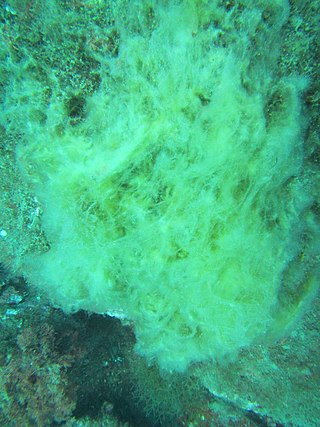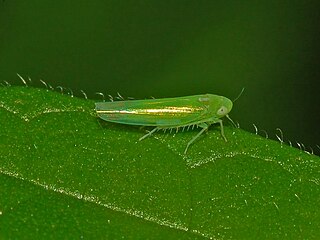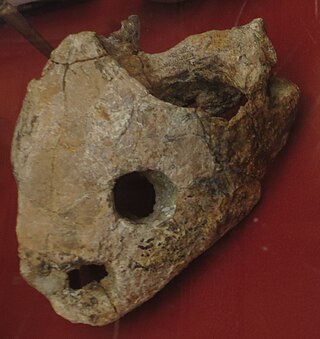
Priapulida, sometimes referred to as penis worms, is a phylum of unsegmented marine worms. The name of the phylum relates to the Greek god of fertility, because their general shape and their extensible spiny introvert (eversible) proboscis may resemble the shape of a human penis. They live in the mud and in comparatively shallow waters up to 90 metres (295 ft) deep. Some species show a remarkable tolerance for hydrogen sulfide, anoxia and low salinity. Halicryptus spinulosus appears to prefer brackish shallow waters. They can be quite abundant in some areas. In an Alaskan bay as many as 85 adult individuals of Priapulus caudatus per square meter has been recorded, while the density of its larvae can be as high as 58,000 per square meter.

The lagomorphs are the members of the taxonomic order Lagomorpha, of which there are two living families: the Leporidae and the Ochotonidae (pikas). There are 110 recent species of lagomorph of which 109 are extant, including 10 genera of rabbits, 1 genus of hare and 1 genus of pika. The name of the order is derived from the Ancient Greek lagos + morphē.

Plagiaulacida is a group of extinct multituberculate mammals. Multituberculates were among the most common mammals of the Mesozoic, "the age of the dinosaurs". Plagiaulacids are a paraphyletic grouping, containing all multituberculates that lie outside of the advanced group Cimolodonta. They ranged from the Middle Jurassic Period to the early Late Cretaceous of the northern hemisphere. During the Cenomanian, they were replaced by the more advanced cimolodontans.

Paulchoffatiidae is a family of extinct mammals that lived predominantly during the Upper Jurassic period, though a couple of genera are known from the Early Cretaceous. Fossils have been reported from Europe. Paulchoffatiids were members of the order Multituberculata. They were relatively early representatives and are within the informal suborder of "Plagiaulacida". The family was named by G. Hahn in 1969, and it honors the Portuguese geologist Léon Paul Choffat. Two subfamilies are recognized.

Carcharhiniformes, the ground sharks, are the largest order of sharks, with over 270 species. They include a number of common types, such as catsharks, swellsharks, and requiem sharks.

Carpet sharks are sharks classified in the order Orectolobiformes. Sometimes the common name "carpet shark" is used interchangeably with "wobbegong", which is the common name of sharks in the family Orectolobidae. Carpet sharks have five gill slits, two spineless dorsal fins, and a small mouth that does not extend past the eyes. Many species have barbels.

The Trachypachidae are a family of beetles that generally resemble small ground beetles, but that are distinguished by the large coxae of their rearmost legs. There are only six known extant species in the family, with four species of Trachypachus found in northern Eurasia and northern North America, and two species of Systolosoma in Chile and Argentina. They were much more diverse in the past, with dozens of described species from the Mesozoic.
Isospora is a genus of internal parasites in the subclass Coccidia.

The Cerophytidae are a family of beetles belonging to Elateroidea. Larvae are associated with rotting wood, on which they are presumed to feed. The family contains over 20 species in five genera, primarily distributed in the New World, but also in Eurasia and Africa. 17 fossil species in 7 genera are known extending to the Early Jurassic. Like some other elateroids, the adults are capable of clicking.

Pelagophycidae is a subclass of heterokont algae.It is the sister group of the axodines. Together, they form the class Dictyochophyceae.

Mesostigmata is an order of mites belonging to the Parasitiformes. They are by far the largest group of Parasitiformes, with over 8,000 species in 130 families. Mesostigmata includes parasitic as well as free-living and predatory forms. They can be recognized by the single pair of spiracles positioned laterally on the body.

Lutjanidae, or snappers are a family of perciform fish, mainly marine, but with some members inhabiting estuaries, feeding in fresh water. The family includes about 113 species. Some are important food fish. One of the best known is the red snapper.

Endeostigmata is a suborder of acariform mites. There are about ten families in Endeostigmata. The grouping is strongly suspected to be paraphyletic, containing unrelated early diverging lineages of mites.

Brumoides suturalis, the three-striped lady-beetle, is a species of ladybird described by Johan Christian Fabricius in 1789. It is found in India, Pakistan, Bangladesh, Sri Lanka, Bhutan, Nepal, Indonesia, Philippines and Papua New Guinea.
The Thiriotiidae are a family of parasitic alveolates in the phylum Apicomplexa.

Empoascini is a tribe of leafhoppers in the subfamily Typhlocybinae.
Amrasca biguttula, commonly known as the cotton jassid, is a subspecies of leafhopper belonging to the subfamily Typhlocybinae of family Cicadellidae. It is a pest of cotton, okra, and other crops in southern Asia and West Africa.

Jainemys is an extinct genus of bothremydid pleurodiran turtle that has been found in the Lameta Formation, India. Originally described by Sohan Lal Jain in 1977 under the name "Carteremys" pisdurensis on the basis of having a deep upper temporal emargination. In 1985 it was assigned to the genus Shweboemys. The species was transferred to the new genus Jainemys by Joyce & Bandyopadhyay in 2020.

Nigeremys is an extinct genus of bothremydid pleurodiran turtle from Niger, Mali and Syria. The genus consists exclusively of the combinatio nova of the type species N. gigantea.

Scymnus (Pullus) latemaculatus, is a species of lady beetle found in Pakistan, India, Bangladesh, Sri Lanka, Thailand, and Taiwan.















